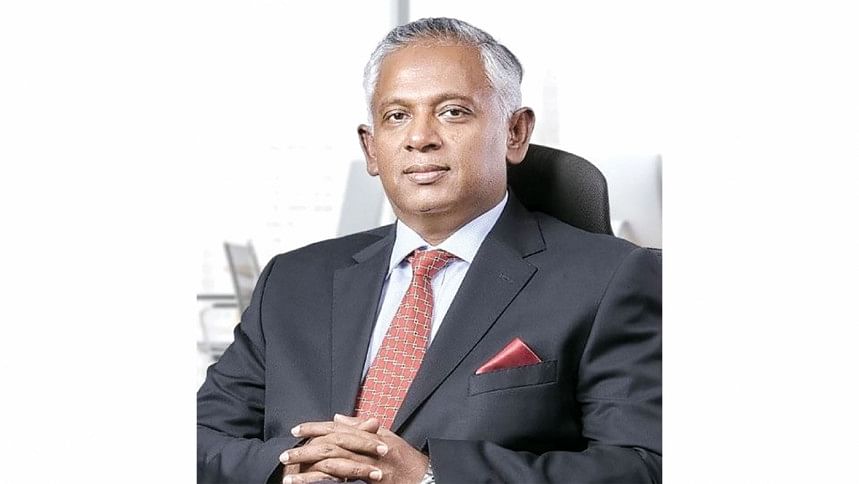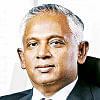Transforming data into digital experiences

In an amusing incident highlighting the generation gap in technology use, a grandmother new to internet was being taught how to use search engines by her grandson. Believing in the importance of politeness, she wrote a stack of thank you notes for internet, grateful for its answers to her questions.
The grandson, amused by her naivety, explained that internet is a tool that doesn't require gratitude but secretly admired her commitment to good manners even in the digital world. The story illustrates the concept of "Internet for All" and how it bridges gaps between generations and social divides.
From my years with Robi, it had a successful strategy of shifting its focus from traditional data services to a broader digital approach, with an eye on its weakest market outside Chattogram, Cumilla, and Dhaka (non-CCD). This move was significant due to Robi's previous challenges with brand recognition and lagging in the 3G market. The digital domain, largely untapped by competitors in 2017, offered Robi a valuable opportunity to climb to a higher market position.
Upon assuming leadership, the aim was to lead in data services, capitalising on competitors' focus on voice services. The market leader targeted a voice-oriented, high-value and aged subscriber base, while the third operator catered to lower-income, voice-dependent customers. Robi, positioned between these two strategies, leveraged techno-commercial analytics to pursue 4.5G data services, believing the market leader would not be able to respond quickly enough to this challenge in the short to medium term.
Following the Robi-Airtel merger, challenges included unexpected fees and an inordinate delay in approval that led to the sacrifice of a most valuable 5 MHz spectrum in the 900 bands. The new team prioritised regaining 1.6 MHz of this spectrum to maintain a competitive edge and prevent rivals from matching their coverage capabilities.
Robi eventually secured 9 MHz in the 900 spectrum, enhancing its coverage advantage. This early action paved the way for Robi's successful data and digital journey. While the act seemed small, its impact was significant.
Robi's acquisition of 9 MHz in the 900 spectrum was crucial for its strategic growth too, paving the way for the launch of L900 (4.5G) in non-CCD areas, achieving more coverage with fewer sites than the other two competitors. Other operators couldn't match this strategy for at least eight quarters. Additionally, Robi enhanced capacity with L1800 and dynamic spectrum features, maximising the opportunities provided by this spectrum.
Robi's strategic moves allowed it to maintain a 4G leadership from the start, initially holding over 60 percent of the market share and, by 2021, matching the market leader. This strategy was particularly effective in non-CCD areas, resulting in a 133 percent growth between 2017 and 2021 and establishing Robi as a major player in the previously weaker markets.
This non-CCD play made Robi a national brand from being a regional brand with supporting ventures like Bangladesh cricket team sponsorship and dual-brand attack. One of the operators was taking sites out from a few areas of non-CCD to Robi's stronghold, thereby helping Robi's growth in that region.
The group initially hesitated to invest in non-CCD areas due to fund constraints and market skepticism. However, prioritising 4.5G expansion in non-CCD regions and reallocating investment from CCD areas proved successful, causing 60 percent of Robi's growth from 2017 to 2021. Despite personal risks, this strategy led to significant changes, including a shift in the brand tagline from "Ignite the Power Within" to "New Experience in Life."
Robi's transition from data play to digital play involved digitalising all internal processes for a paperless office, inspired by an IBM course for Axiata managers and adopting the DevOps concept. The company expanded into enterprise solutions with cloud services, data centres, and homegrown digital platforms. This evolution, coupled with the largest IPO in the country, solidified Robi's status as a respected and trusted brand.
Over five years, Robi evolved into a national player and digital leader in the market. By 2021, its data revenue was within striking distance of the market leader. Robi's future hinges on its continued emphasis on digital and data strategies, particularly maintaining its 4.5G dominance, as voice revenue diminishes significantly, mirroring trends in the developed markets.
The author is founder and managing director of BuildCon Consultancies Ltd

 For all latest news, follow The Daily Star's Google News channel.
For all latest news, follow The Daily Star's Google News channel. 



Comments